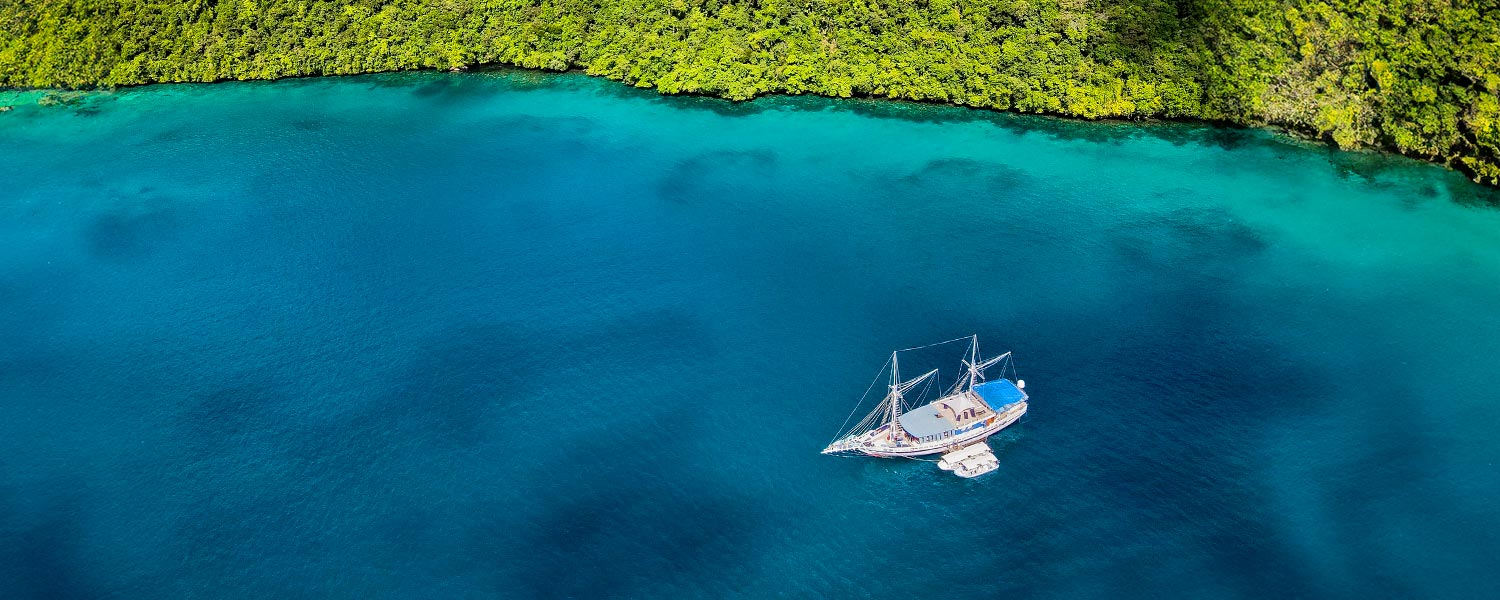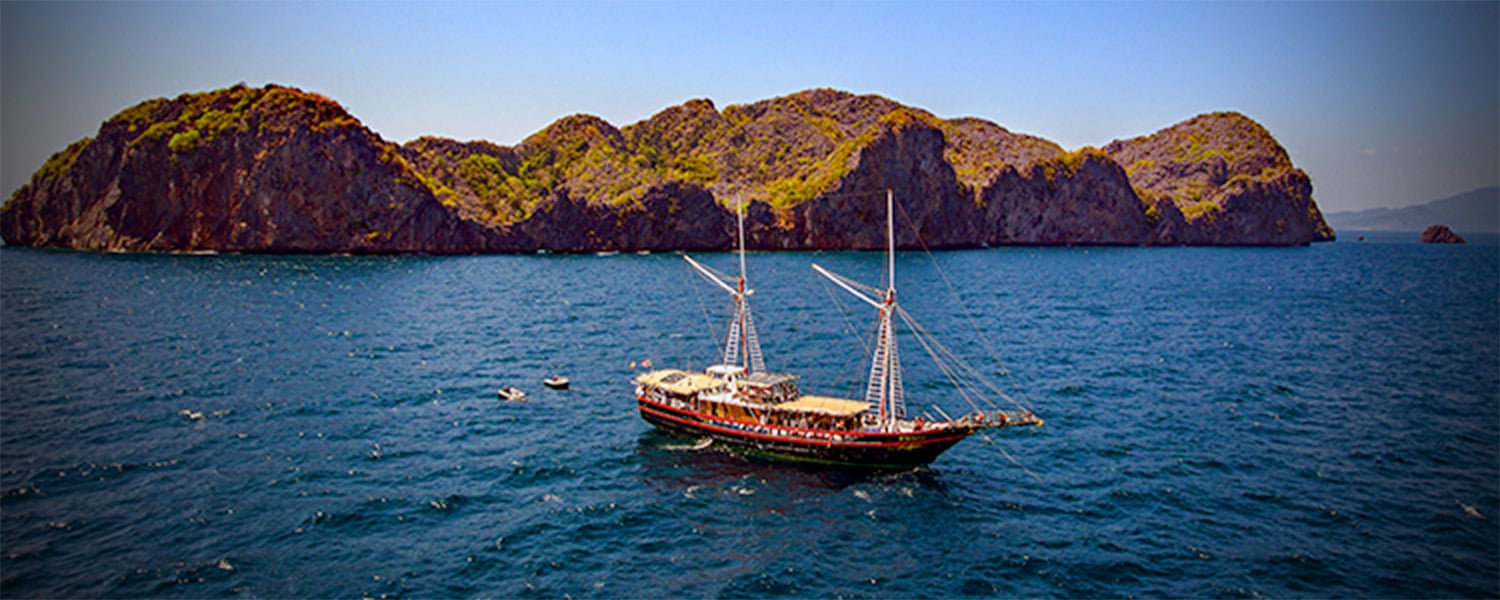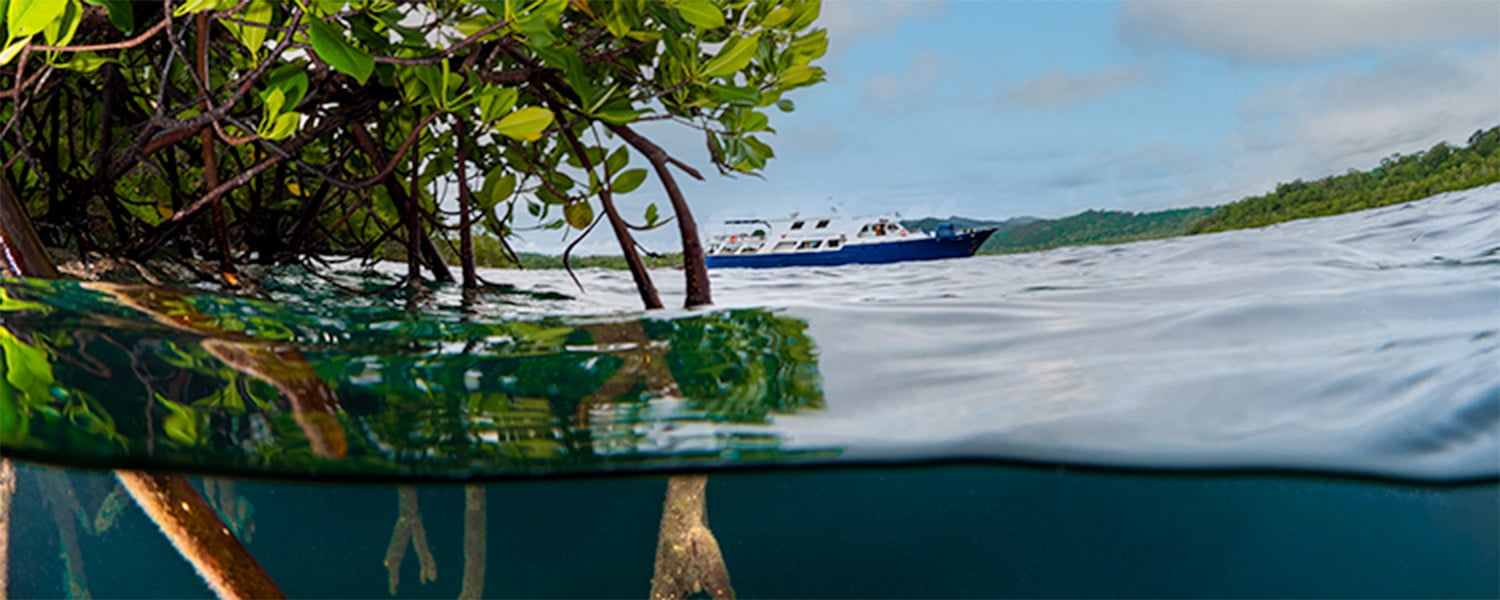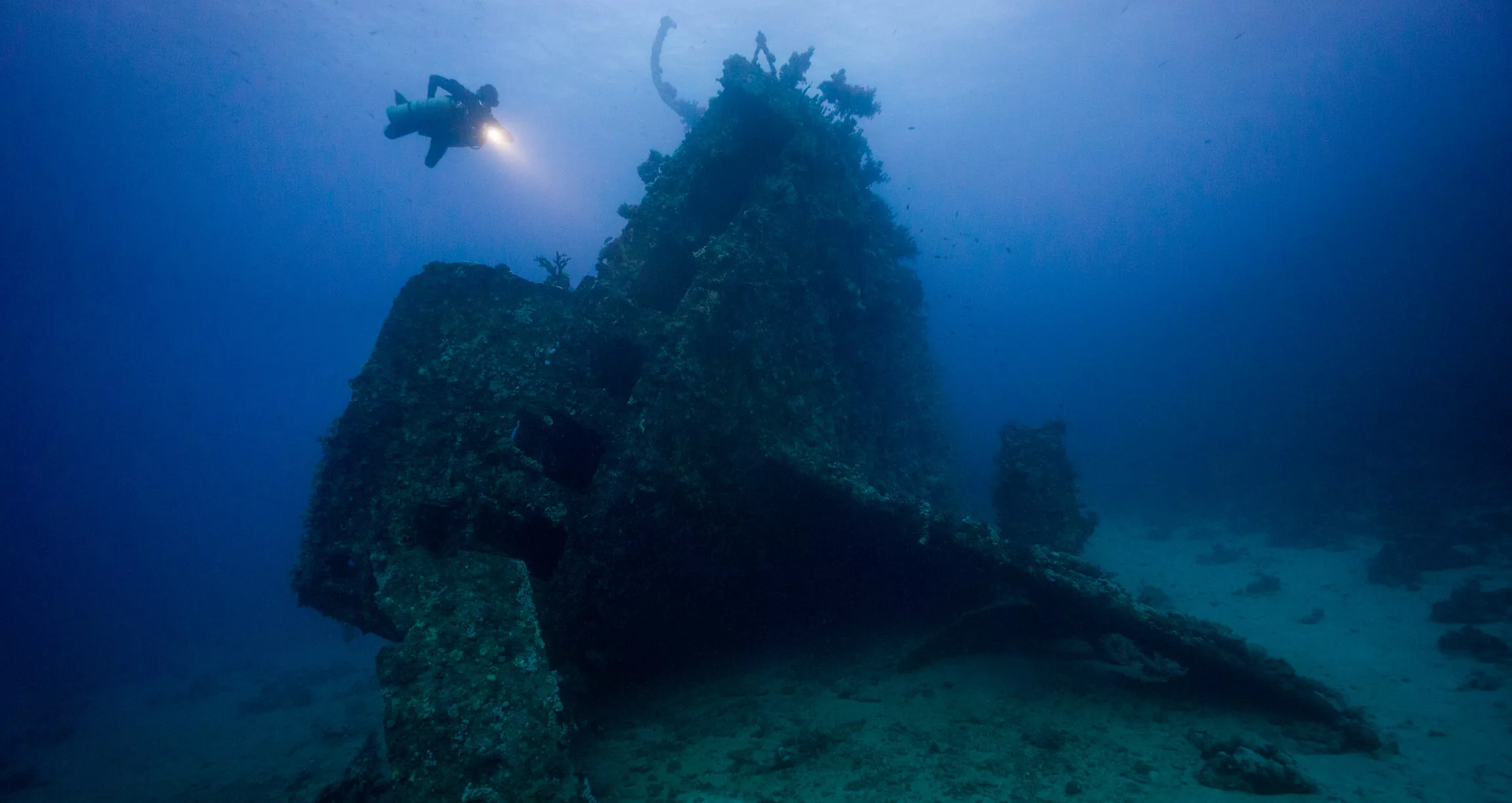Now that you have avoided silly mistakes with your air and your kit , you are probably not the immediate scapegoat onboard. Congrats! So now do yourself a favour; keep up the good work and do not make any mistakes with the wildlife!
What is wildlife?
“Wildlife traditionally refers to undomesticated animal species, but has come to include all organisms that grow or live wild in an area without being introduced by humans. “
This definition describes perfectly everything we see underwater during a dive. And that is one of the reasons we go diving.
Don’t play with wildlife
Remember Steve Irwin? While filming a documentary series, Irwin was stabbed in the heart by a stingray and died. You may think this is just a freak accident, but Steve Irwin was not the first one (nor the last one unfortunately) to be killed by wildlife.
Timonthy Treadwell & Vitaly Nikolayenko, bear gurus, George Went Hensley, the Bible snake handler, Joseph Bruno Slowinski, the creator of the first online herpetological journal, Allen Campbell, the elephant trainer, or Patricia Wyman, the wildlife biologist – all of them met tragic endings due to the wildlife they were expert with.
The lesson here: even qualified people die from wildlife incidents. So now imagine us…..
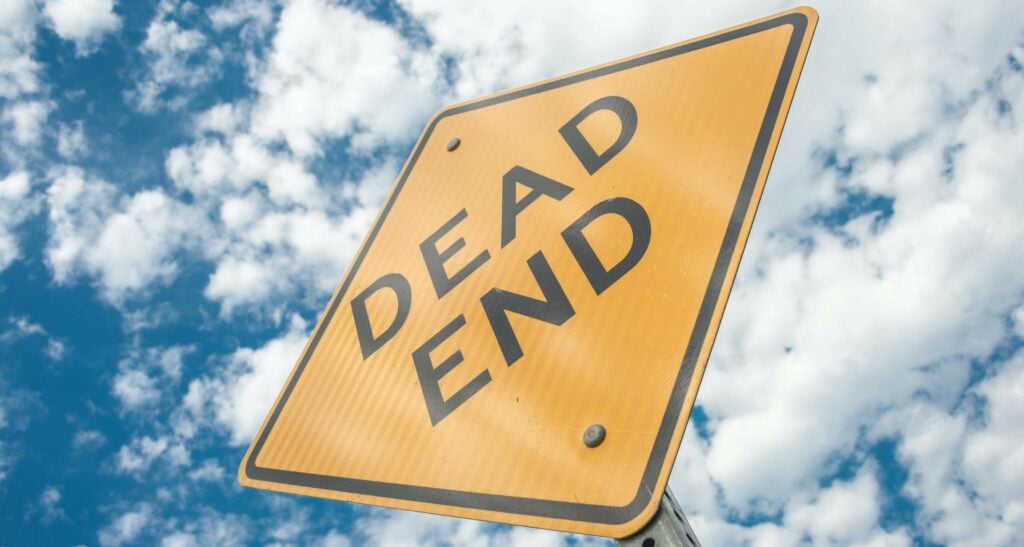
Do not touch
“Oh I need to take a photo of this clownfish! It is so cute! Let’s hold onto that rock so I get a superb shot.”
And…. Ooops. That rock was a stonefish. Stonefish are one of the most venomous species of fish. There is a reason your guides keep repeating that we should not touch anything. Touching anything underwater means that you may do harm and you may hurt yourself.
A lot of the marine life can be exposed to infection through direct contact. You destroy with your hands the thin layer on their skin which is protecting them from parasites. Most marine life is also extremely fragile. Even with the gentlest of touches, you could be damaging delicate structures such as corals.
Marine life can also pose a serious threat to us. There are many species of venomous fish (see above). Many species of coral have a severe sting, such as fire coral which wears its name as a warning. Even some species of octopus can be incredibly venomous, like the blue ring octopus. Our oceans are full of incredibly adapted species, so many that it would be impossible to list all the critters that could injure us if we were to touch them. And that’s another reason it’s important to adopt a no-touch policy.
Wildlife is wild.
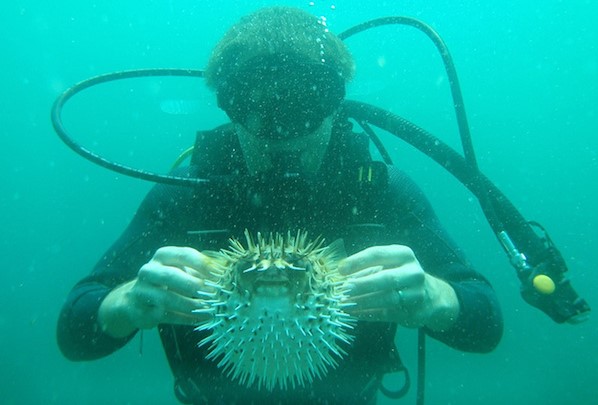
Do not ride
“Look at me! Come on film it, dude! I am riding a turtle: that is soooo dope!”
Says no self-respectful diver. Do not be an idiot. Do not ride turtles. Actually do not ride any underwater creatures. It always ends in tears and more often than not, the animal is the one ending up injured, or worse. Riding an animal underwater will definitely put you in the persona non grata box while you are onboard. So do yourself a favour (and the animals); do not ride any animals underwater.
Wildlife is wild.
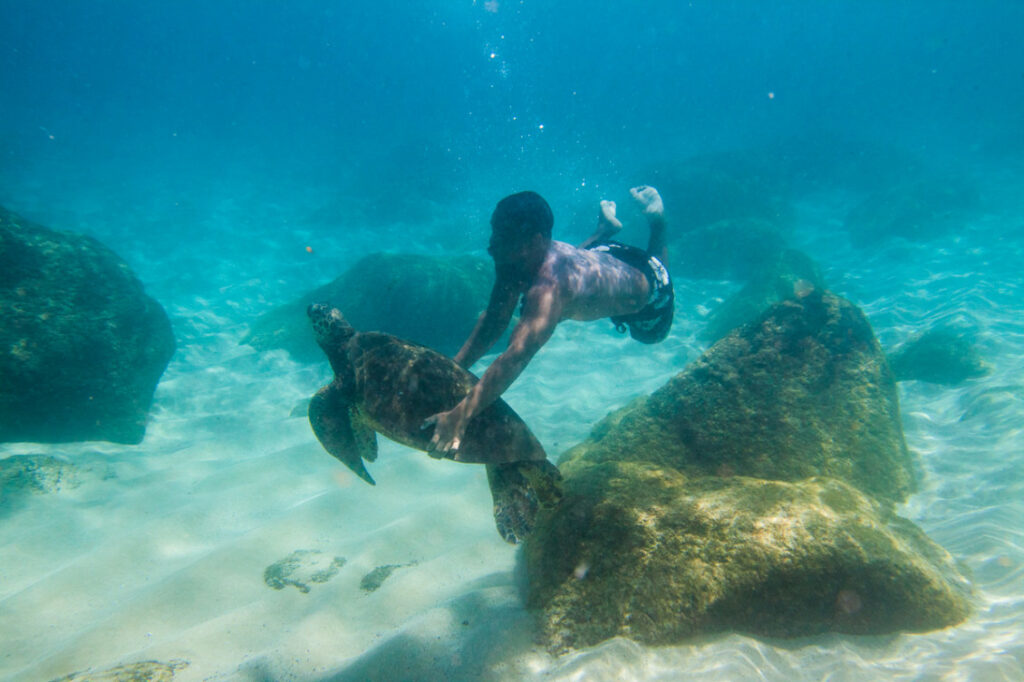
DON’T do this! 
DON’T do this! 
DO this instead!
Do not chase
“Have you seen this whale shark passing by?? I need a selfie with it so let’s go after it!”
Don’t chase and try to catch the sea creatures. First of all, chasing sea creatures will often scare them. They run away when chased. I mean imagine minding your own business and seeing a giant charging you: you would too! It will also make you very unpopular onboard. You will be forever known as the person who chased the whale shark away and made sure that no one else onboard saw it.
If that doesn’t scare you enough already, imagine what a whale or shark tail slap would feel like…
Wildlife is wild. We think you get the idea but in case:
Do not feed
“Oh this is amazing. This moray is so friendly that she has a name, Emma. Everyone brings her snacks and she plays with us.”
Big mistake here: you too could have a toe stitched in place of your thumb.
We don’t think you need more explanation than this video when it comes to your safety and well-being. But again, it’s generally extremely bad for the animals.
Wild animals have specialised diets, and they can become malnourished or die if fed the wrong foods. Also, animals cannot distinguish food from wrappers or foil and can get sick eating these items. Feeding encourages marine wildlife to become dependent on humans for food. It weakens the natural hunting and scavenging drive of the animal, making them less inclined to search for food themselves. This will, in turn, make them more susceptible to predators, as it dulls their natural survival instinct.
Wildlife is wild.
Do not invade territory
“Oh that lovely Titan triggerfish is nesting! So cute! I should get closer and take a photo.”
Fatal mistake here: your fins will bear witness as shown here. When asked, 90% of our diving staff will tell you that these tiny fishes are the most dangerous animals!
It is important you learn about all creatures underwater and understand how they behave. Sometimes it is live and learn but listen to your guides attentively and get to know your undersea friends.
This will give you an understanding of things that are common in the area that you should know about. Such as nesting Titan triggerfish are very aggressive and that their territory during this period is an inverted cone.
Wildlife is wild.
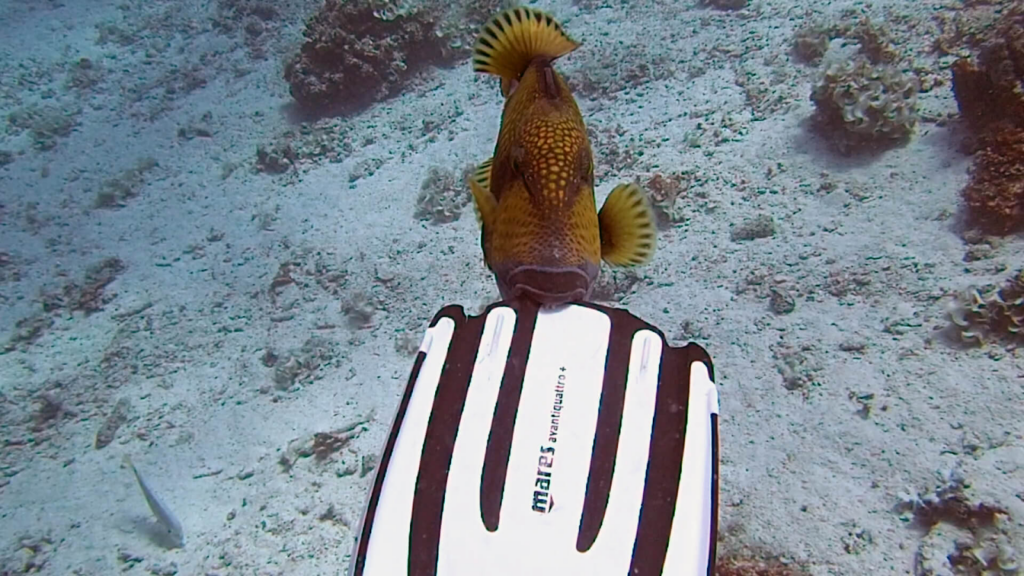
Be healthily fearful and respect Mother Nature
It is easy to think we know it all. As you dive more, you become more confident and you lose many of your healthy fears. We have all been there. But being healthily fearful is the way to go though. Talk with any instructor or dive guide, they will tell you that it is good to be fearful. It keeps us alert and aware. Our common sense does not go out of the window and we realise that wildlife is best left alone because….. It is wild!
As a rough introductory guide, here is a list of the most dangerous underwater creatures. Do have a look at number 13:
- Pufferfish
- Blue-ringed octopus
- Stonefish
- Great white shark
- Lionfish
- Cone snail
- Flower urchin
- Saltwater Crocodile
- Box Jellyfish
- Sea Snake
- Stingray
- Great Barracuda
- Human
As divers, we are also all ambassadors for the ocean and all the creatures that live there. Particularly where threatened species like sharks are concerned, our ability to interact with them without incident is key in changing public perception. This consequently promotes conservation. Respect Mother Nature – it is that simple and if you do not do it for Mother Nature, do it for your own self-preservation. If we follow the no-touching, teasing, or taking rule, we can easily avoid most injuries caused by marine life.
